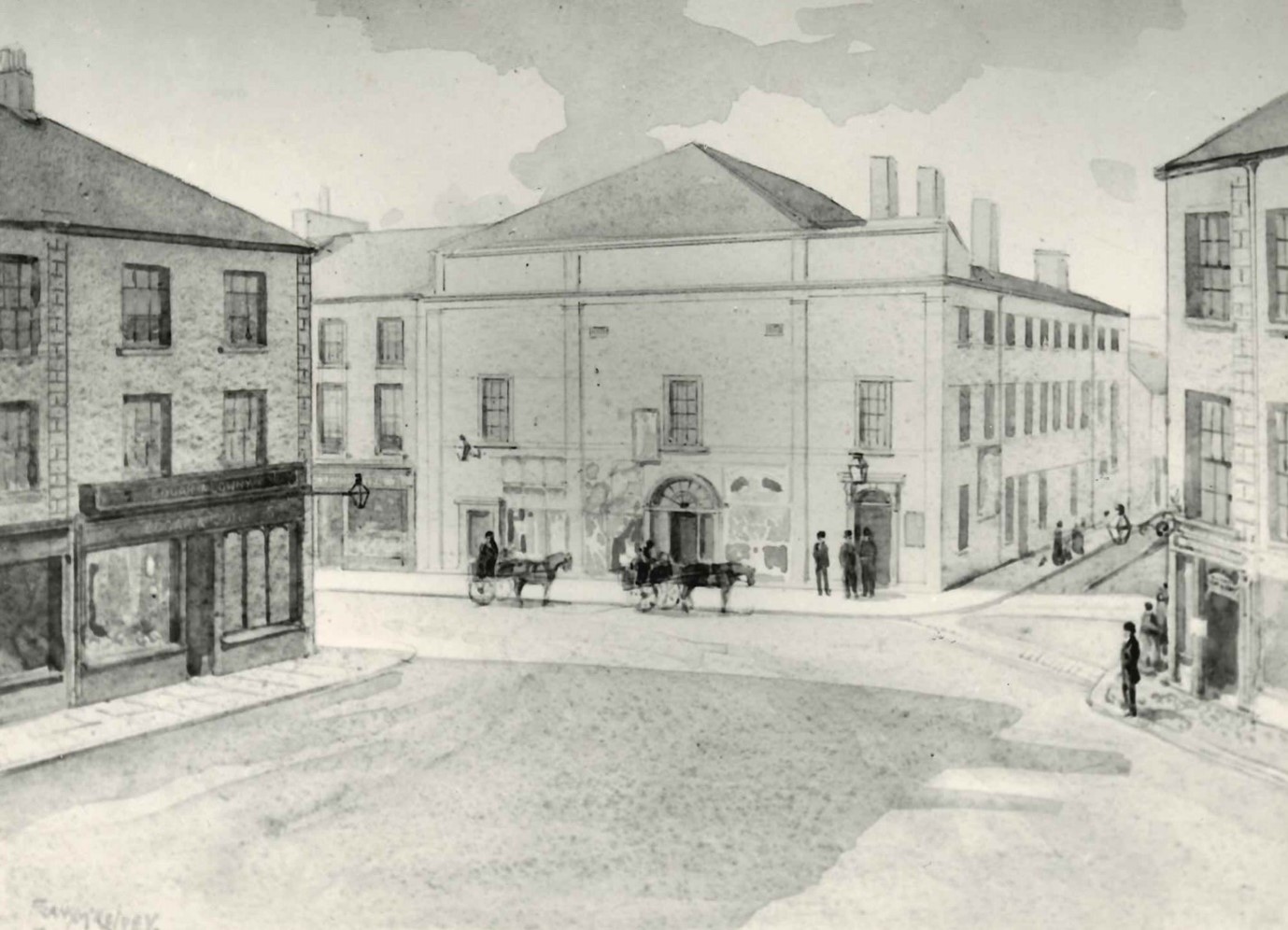A History of the Theatre Royal
The Theatre Royal, or Belfast Theatre as it was originally known, opened on the corner of Arthur Street and Castle Lane on Monday 25 February 1793. It was Belfast’s first large auditorium seating 1,100 people. It initially opened under the management of Michael Atkins and although management of the theatre changed a number of times in the intervening years, each new manager brought new names and performances to the Belfast theatre scene.
In 1809 the theatre was taken over by Mr Montague Talbot, an enterprising actor who also bought theatres in Newry and Derry, he held on to the Theatre until April 1835. It was taken over by the actor Mr Burroughs who renovated the site, enlarged the theatre, had the auditorium repaired, embellished and remodelled it. He also installed a gas chandelier and a new drop curtain. It was next managed by Mr Thornbourne from January 1841, he cared about audience comfort and installed an extra fire to keep the audience warm. He also acted, appearing in Henry the Fourth and The Wife - A Tale of Mantua. This period also saw a significant name change to the Theatre Royal after a visit from Queen Victoria on the 11 August 1849.
Joseph Warden bought the theatre in late 1850s and was the official manager from about 1863 onwards. His first show on 26 January 1863 featured Prestidigitation on opening night. Under Warden the Theatre Royal offered a mix of drama and variety performances, and in its later years it played host to famous opera companies. The theatre became so popular that demand outweighed seating capacity and Warden closed it in March 1871 in order to create a larger venue. It was remodelled into a new building that was 80 feet high with a red brick exterior that stretched along Arthur Street and Castle Lane. Seating 2,200 people it had twice the original capacity. The theatre reopened again in September 1871 with the play Time Works Wonders. Special trains ran late to account for later performances. The Belfast Morning News praised the new décor.
However, the theatre met with disaster when a fire broke out on 8 June 1881 and the theatre was reduced to four bare and blackened beams. Community effort rallied round to save the beloved institution and funds were raised for its restoration. There was a concert on 14 June to raise money for band members’ instruments. The theatre opened again in December 1881 aided by architect C.J. Phipps. The opening was marked by celebrated Belfast favourite Barry Sullivan who left his partial retirement to play the Cardinal in Richelieu. Warden continued to improve the theatre with small upgrades over the years and in 1888 he boasted his audience was the only one in Ireland protected by a fireproof curtain.
Warden capitalised on his success building the Grand Opera House in Belfast in 1895, running both theatres with his son Fred. However, Warden didn’t consider the audiences both venues might attract and his profits were diluted as a result. The Wardens struggled to get the audiences to fully book out both venues as they faced competition from other flourishing theatres in Belfast like the Royal Hippodrome, the Empire, Olympia Palace and the Star. These new theatres, especially the Royal Hippodrome, and the advent of silent movies meant his theatres struggled to find audiences. The Theatre Royal eventually closed its doors on 10 March 1915.
The site has been a cinema and various shops in the intervening years and is now a coffee shop. The buildings next to it still bear the name ‘Royal Buildings’, a nod to the Theatre that once graced that corner to which people flocked to see entertainers from around the world. The area is a popular place for buskers, so entertainment is still to be found on the site.

